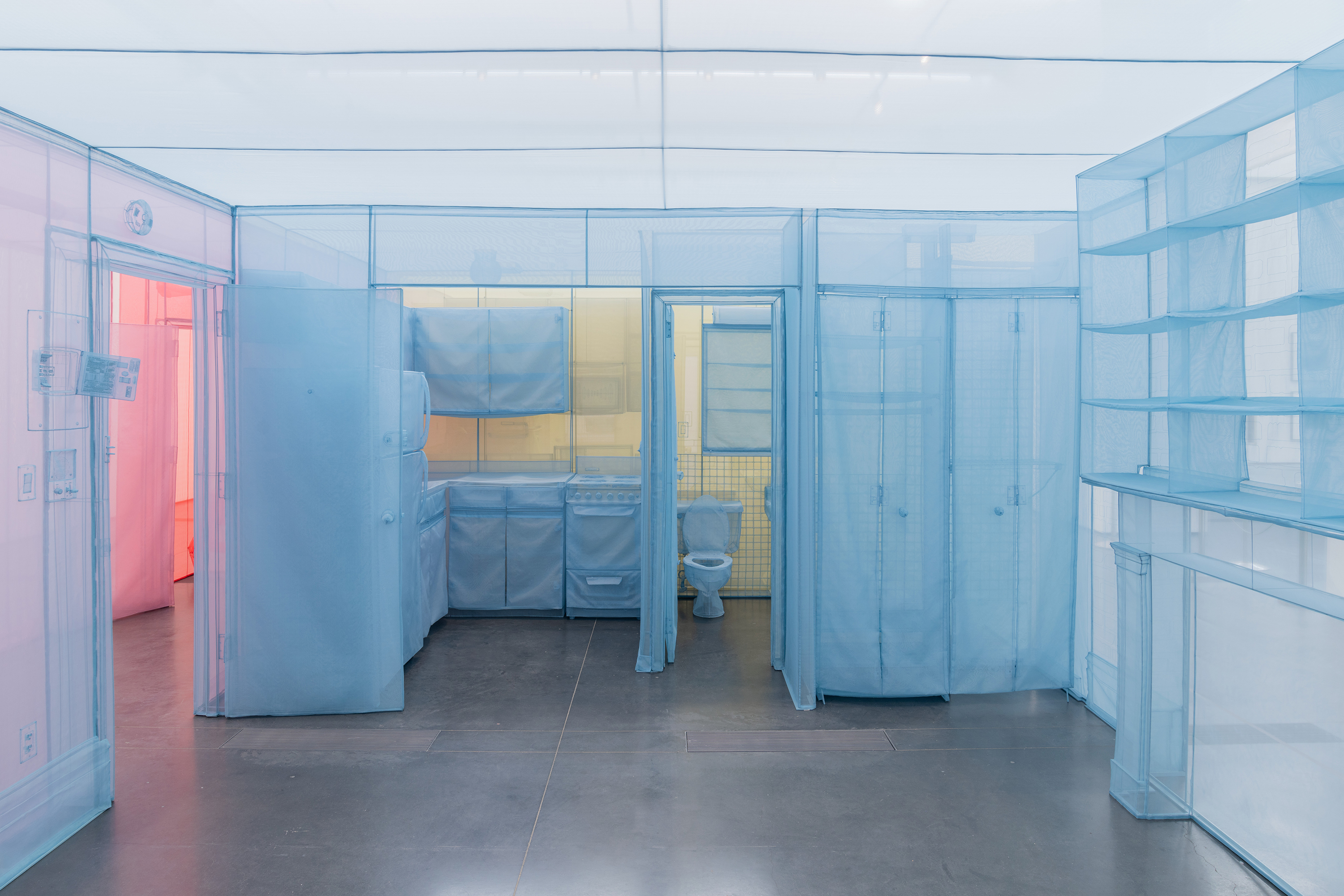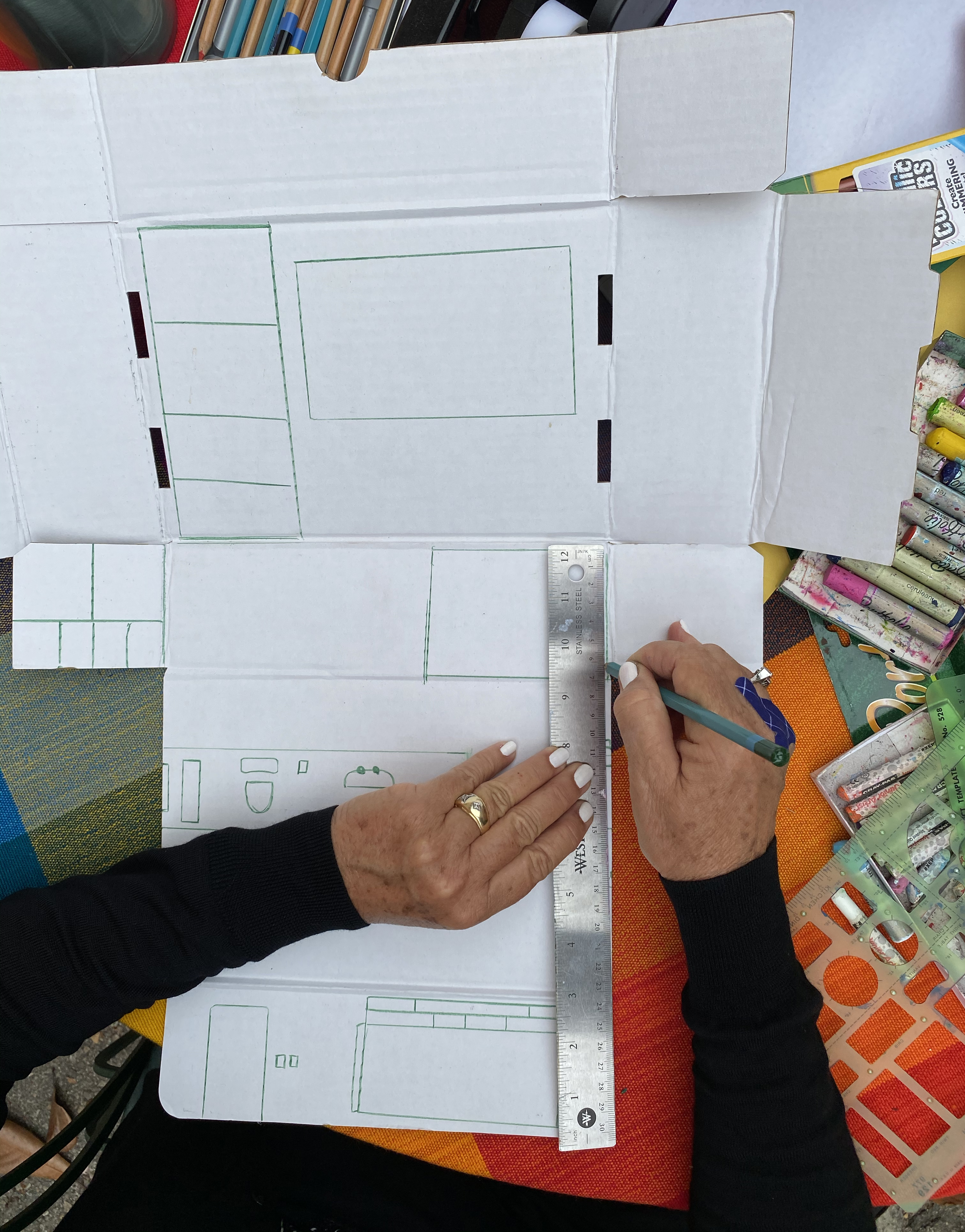You've been home a lot lately. Without even knowing it, you've also been building memories. Perhaps someone told a really funny joke at the dining table, you read an amazing book while curled up on the couch, or your family had a spontaneous dance party in the kitchen. Today we are going to make a memory box to help keep your memories. Especially since a lot has happened in this historic year.
Korean artist Do Ho Suh thinks a lot about home and memories and makes life-size fabric recreations of places he has lived.

Take a good look at this image of Suh's artwork called 348 West 22nd Street. This sculpture is a full-scale recreation of a New York City apartment he lived in for 18 years. Unlike the real apartment, his interpretation is made out of fabric and can fold up. He can take it, and the memories inside, with him anywhere he goes!
What room in Suh's home do we see?
Name three appliances.
What surprises you the most about this artwork?
Before we start the art activity, here are some questions to think about. The questions might seem simple and obvious, but they will help you think about what will go in your memory box. Feel free to talk out your answers with a family member or friend. Or you can write down your answers.
- What is a home? What makes a home different from other kinds of buildings?
- Who lives in your home? (Don't forget any pets!)
- What are the different parts of your home?
- Make a list. Is there a roof, a kitchen, a bathroom? How about light switches, outlets, door knobs, or fire alarms? Don't forget doors and windows!
- Which rooms do you use the most?
Let's make a memory box!
Scavenger Hunt! Gather supplies from around your home.
Materials:
- Cardboard box—the size of a cereal box or larger
- Colored pencils, markers, or crayons
- Colored paper
- Scissors
- Ruler
- White paper for sketching
- Pencil
- Tape
Step One: Write Down Some Memories
Choose a room in your home that you spend a lot of time in. Make a list of three memories that happened in that room. It is helpful to sit in the room while you write your memories. (If you have more than three, that's great! You can also add more as you work on your memory box.)
I remember when __________________________
I remember when __________________________
I remember when __________________________
Step Two: Make a Sketch
In pencil, and on the white paper, quickly sketch a floor plan—basically the shape of the room (is your room a rectangle, square, or circle). Add details like windows, doors, bookcases, vents, doorknobs, light switches, power outlets, etc.
Next, add any appliances and/or furniture.
Step Three: Draw in the Box
It is easier to draw on the flat surface of a disassembled box. Have an adult help to cut the box along the corners to make it flat. You can tape it back together after you finish the project.
Using your sketch as a guide, draw all the elements of your room on the inside of the cardboard box. Make sure to add the furniture.
Step Four: Add Your Memories!
Cut strips of colored paper about 1 inch wide and 6 inches long. Fold the paper like an accordion to make a small book. Write a memory from your list (see Step One). Tape down the strips of paper in the spots where the activities happened. For example, if you remember losing a tooth at dinner, tape the strip with that memory written on it where you drew your dining room table.
Step Five: Reassemble Your Box
If you disassembled your box, tape it back together.
Step Six: Name Your Memory Box
Give your box a special title. If you would like, add the date. Don't forget to sign your name!
If you share your creation on social media, tag us at @lacma! We love seeing your art!
Join us on Sunday, November 8 for a storytelling session about home with performer Karen Golden.






